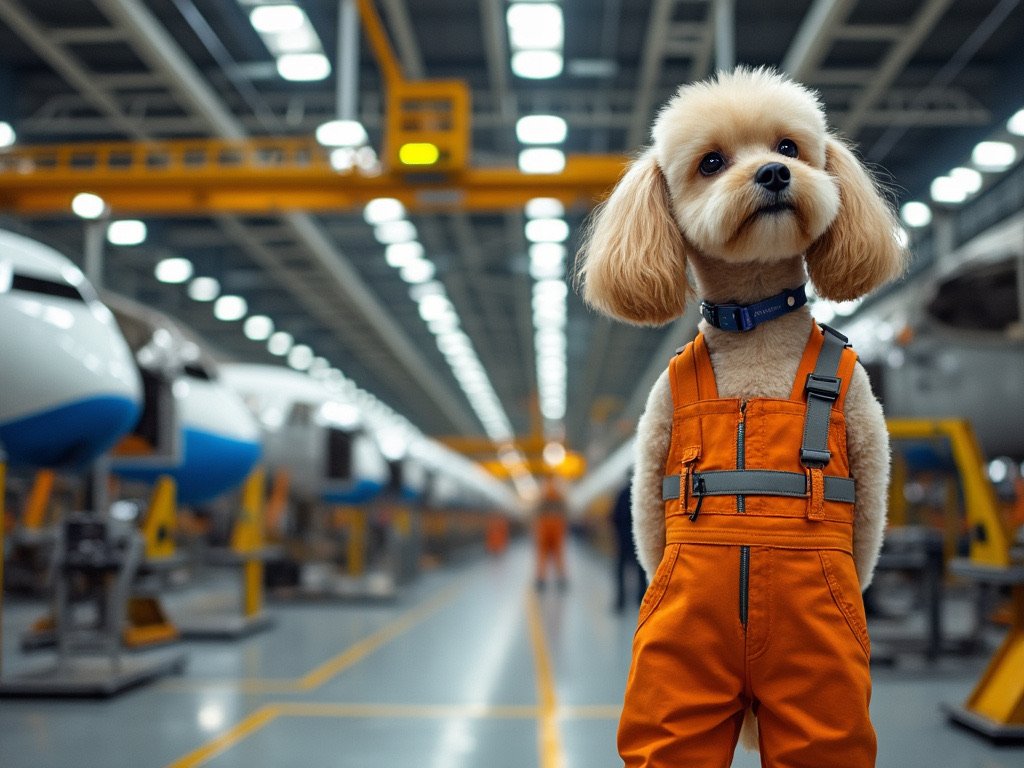Flossi at Boeing After Massive Layoffs Announced
Boeing will cut 10% of its workforce, or about 17,000 people, as the company's losses mount and a machinist strike that has idled its aircraft factories enters its fifth week.
Boeing’s Role in U.S. Aviation and Subcontractors
Boeing is critical in the U.S. aviation sector, spanning commercial, military, and space aviation. Here’s an in-depth look at both its subcontractor relationships and roles across aviation sectors:
---
1. Boeing’s Subcontractors and Supply Chain
Boeing's production relies on a vast network of subcontractors and third-party suppliers across the U.S. and internationally. This complex supply chain includes manufacturers of:
- Aerospace parts: Engines, avionics, wings, landing gear, and fuselages.
- Materials: Suppliers of composites, aluminium, titanium, and other raw materials used in aircraft.
- Technology systems: Companies providing avionics, software, and other technological components.
Some notable subcontractors and third parties supporting Boeing include:
1. Spirit AeroSystems: Based in Wichita, Kansas, Spirit AeroSystems is Boeing’s largest supplier of aircraft fuselages. It provides fuselage sections and components for Boeing’s 737 and 787 programs.
2. General Electric (GE): GE is a critical supplier of jet engines for many Boeing aircraft models, including the 737 MAX and 777. GE provides LEAP engines and other systems for Boeing's fleet.
3. Safran: A French multinational, Safran provides landing gear, engine nacelles, and wiring systems for Boeing aircraft. The CFM International joint venture between Safran and GE is responsible for the LEAP engines powering Boeing aircraft.
4. Honeywell Aerospace: Honeywell provides avionics, navigation systems, and cockpit displays for various Boeing aircraft models. Honeywell’s technology is crucial in improving efficiency, safety, and communication in flight.
5. United Technologies (now Raytheon Technologies): This company supplies environmental control systems, landing gear, and braking systems for Boeing’s commercial and defence aircraft.
6. Rockwell Collins: Another major supplier, Rockwell Collins (now part of Raytheon Technologies), provides avionics systems and interiors for Boeing's aircraft.
7. GKN Aerospace: GKN is a crucial subcontractor providing components like wing structures, engine nacelles, and aerostructures for Boeing aircraft, including parts for the 787 Dreamliner.
8. Hexcel: Hexcel supplies advanced composite materials used in the construction of Boeing aircraft, including lightweight but strong carbon-fibre materials for fuselage and wing structures.
Global Subcontractor Network:
Boeing’s supply chain extends internationally. Countries like Japan, Italy, and the UK are also part of the subcontractor network. For example, Mitsubishi Heavy Industries in Japan supplies the 787’s wings.
---
2. Boeing’s Role in Different Aviation Sectors
Commercial Aviation
Boeing is a dominant force in commercial aviation, producing aircraft like the 737, 777, and 787 Dreamliner, which are widely used by airlines worldwide. Boeing’s commercial aircraft division delivers aircraft for passenger and cargo transport, with the 737 MAX being one of the most widely ordered models in history.
- 737 MAX: Known for short- to medium-haul flights, it is the workhorse for budget airlines and major carriers.
- 777X: Boeing’s newest wide-body jet, designed for long-haul international flights, offering better fuel efficiency.
- 787 Dreamliner: A long-range, fuel-efficient aircraft known for its lightweight carbon-fibre structure.
Defense and Military Aviation
Boeing is one of the top defence contractors in the U.S. and globally. Boeing’s Defense, Space & Security division produces fighter jets, helicopters, drones, and transport aircraft. Some critical military aircraft include:
- F/A-18 Super Hornet: A multi-role combat jet used by the U.S. Navy and several international air forces.
- KC-46 Pegasus: A military aerial refuelling and strategic transport aircraft.
- AH-64 Apache: An attack helicopter used by the U.S. Army.
- P-8 Poseidon: A military aircraft used for anti-submarine warfare and maritime patrol, adapted from the Boeing 737.
Boeing also plays a significant role in unmanned aircraft systems (UAS), like the MQ-25 Stingray unmanned aerial refuelling system.
Space and Satellite Technology
Boeing is deeply involved in developing rockets, spacecraft, and satellite technology in the space sector. Some notable contributions include:
- SLS (Space Launch System): Boeing is the primary contractor for NASA’s SLS, designed to carry astronauts and cargo beyond low Earth orbit, including missions to Mars.
- Starliner: A spacecraft developed to transport astronauts to the International Space Station (ISS) as part of NASA’s Commercial Crew Program.
- Satellites: Boeing designs and builds communication satellites for commercial and government use, including the Boeing 702 satellite platform.
# Unmanned Aerial Vehicles (UAVs) and Future Aviation
Boeing is investing heavily in developing unmanned systems and future aviation technologies. This includes autonomous aircraft for military applications and advancements in urban air mobility. Boeing’s acquisition of Aurora Flight Sciences has expanded its role in cutting-edge research and development of UAVs and electric vertical takeoff and landing (eVTOL) aircraft.
---
3. Boeing’s Economic Impact on the U.S.
Boeing’s contributions extend beyond aircraft production to job creation, innovation, and trade:
- Job Creation: Boeing directly employs over 140,000 people globally, with a significant portion based in the U.S. Boeing’s supply chain supports hundreds of thousands of additional jobs nationwide through its partnerships with thousands of subcontractors and suppliers.
- Research and Development: Boeing is a leader in aerospace R&D, investing in technologies like sustainable aviation fuel (SAF), autonomous flight, and aerospace materials.
- Trade and Exports: Boeing is one of the largest U.S. exporters, generating billions of dollars in export revenue. In 2019, for example, Boeing accounted for nearly $30 billion in U.S. exports, mainly through commercial aircraft sales to international airlines.


